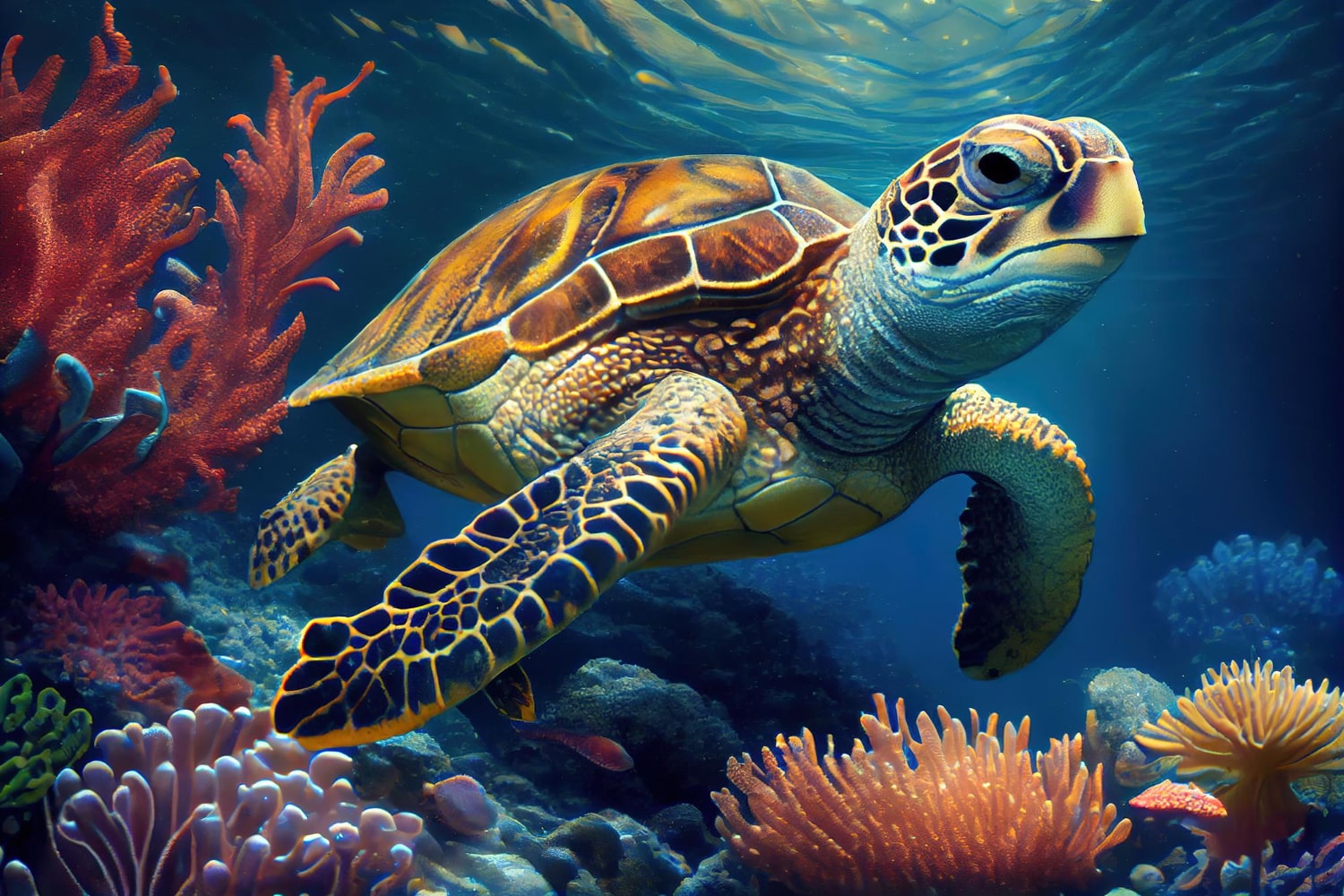
20 interesting facts about sea turtles
- 👁️ 295
Sea turtles, captivating marine creatures, have roamed the Earth’s oceans for more than 100 million years, even surviving the extinction event that wiped out the dinosaurs. They play crucial roles in maintaining the health of the oceans, from promoting coral reef vitality to transporting essential nutrients from the oceans to the beaches and coastal dunes. Sea turtles have a rich cultural significance in many societies, symbolising wisdom, endurance, and longevity. Let’s delve into the fascinating world of these ancient mariners.
- There are seven species of sea turtles: the green, loggerhead, Kemp’s ridley, olive ridley, hawksbill, flatback, and leatherback.
- Sea turtles are one of the Earth’s most ancient creatures. The oldest known sea turtle fossils date back about 150 million years.
- Unlike other turtles, sea turtles cannot retract their legs and head into their shells.
- Some species of sea turtles undertake impressive migrations, travelling thousands of kilometres between their feeding grounds and nesting sites.
- Female sea turtles return to the same beach where they were born to lay their eggs.
- Sea turtles have temperature-dependent sex determination, which means the temperature of the egg’s environment determines the turtle’s sex.
- Leatherback sea turtles are the largest species and can weigh up to 900 kg.
- The smallest sea turtle is the Kemp’s ridley, which grows up to 70-100 cm in length.
- The diet of sea turtles varies by species. Some are omnivores, consuming a variety of plants and animals, while others are specialised feeders.
- For example, the primary diet of green turtles is seagrass, while hawksbills feed mostly on sponges.
- Leatherback sea turtles can dive deeper than any other turtle, reaching depths of 1,280 metres.
- The lifespan of sea turtles is unknown, but they are believed to live 80 years or more.
- Sea turtles can rest or sleep underwater for several hours at a time.
- Sea turtles have a built-in compass that uses the Earth’s magnetic field to navigate.
- The leatherback sea turtle’s scientific name, Dermochelys coriacea, means “skin turtle,” referring to its unique, leathery shell.
- Most sea turtle species are classified as endangered or critically endangered due to human activity, such as fishing, coastal development, pollution, and climate change.
- All seven species of sea turtles are protected under international law.
- In some cultures, sea turtles are considered sacred and are incorporated into spiritual beliefs and practices.
- Climate change impacts sea turtles in various ways, from altering their nesting beaches through sea-level rise and increased storm activity to affecting sex ratios due to changing temperatures.
- While most turtles are known for their slow movement, sea turtles are relatively quick swimmers, with some species capable of reaching speeds of 35 km/h.
Sea turtles, despite their enduring presence in our oceans, are under increasing threats from human activities and environmental changes. Their plight highlights the importance of marine conservation efforts. As ambassadors of the oceans, the survival of sea turtles is integral to the health of the seas and a testament to the overall well-being of the planet. Let their continued existence be a beacon of hope and a reminder of our shared responsibility to safeguard the Earth’s biodiversity.
Sea turtles, captivating marine creatures, have roamed the Earth’s oceans for more than 100 million years, even surviving the extinction event that wiped out the dinosaurs. They play crucial roles in maintaining the health of the oceans, from promoting coral reef vitality to transporting essential nutrients from the oceans to…